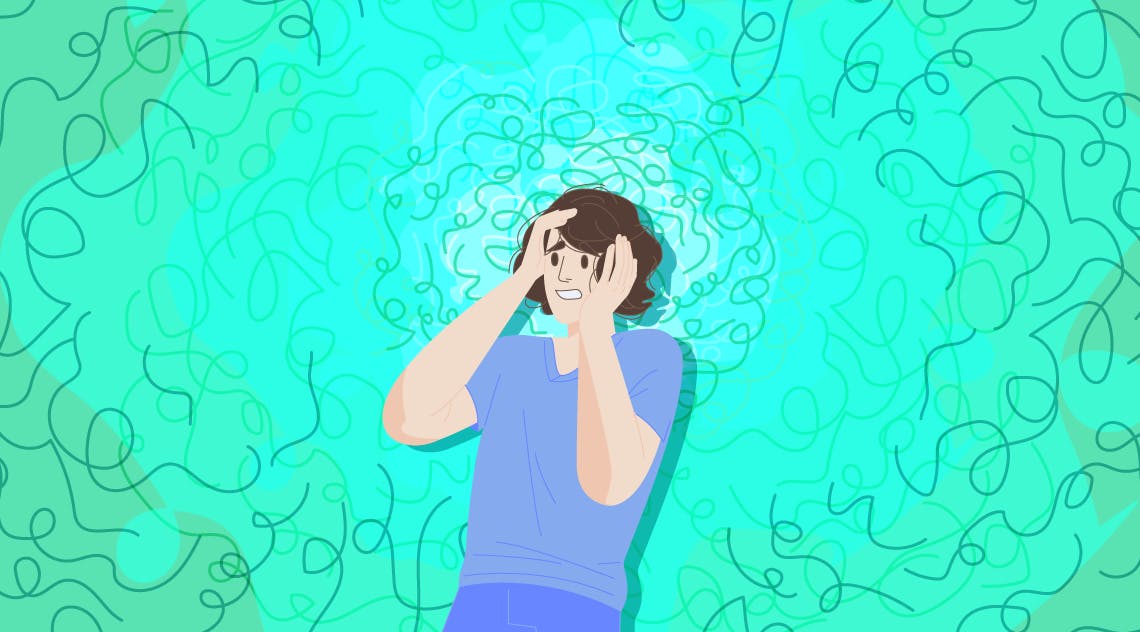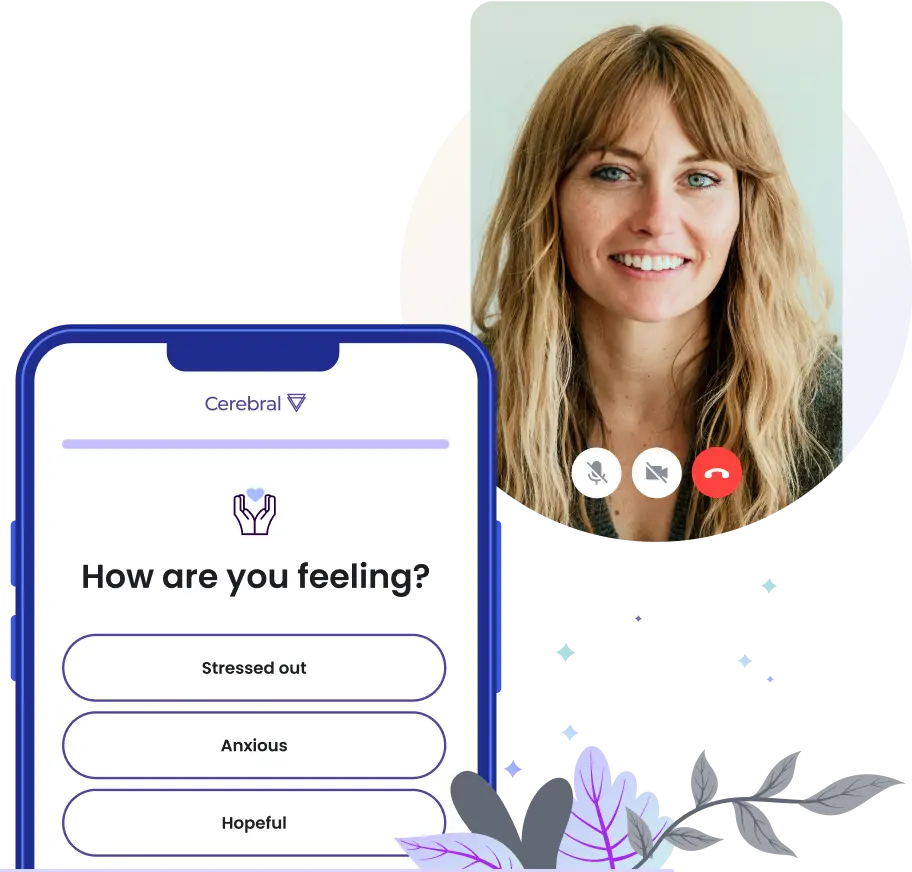Differences in PTSD by Gender Identity

Post-traumatic stress disorder (PTSD) doesn't discriminate; it can affect anyone who has been directly or indirectly exposed to a traumatic event. However, the way PTSD manifests can differ between men, women, and other gender identities. Understanding these differences facilitates effective treatment and support.
In this informational guide, we'll explore how PTSD symptoms vary by gender identity, what triggers them, and personal considerations you might take into account when managing this complex condition.
While this content addresses general experiences of PTSD by gender identity and biological sex, it's important to remember that these are generalizations. We acknowledge that every individual is unique and may have different experiences and responses to trauma that differ from what we've outlined here.
What is PTSD?
PTSD is a mental health condition triggered by experiencing or witnessing a traumatic event, which could include anything from natural disasters and serious accidents to personal assaults and military combat.
Individuals with PTSD often relive the traumatic event through flashbacks or nightmares, leading to severe anxiety and emotional distress.
PTSD symptoms typically include:
- Intrusive memories
- Avoidance behaviors
- Negative changes in thinking and mood
- Alterations in physical and emotional reactions
These symptoms can be debilitating and interfere with daily life, but they can also vary significantly based on one’s biological sex and/or gender identity.
PTSD in men vs. women vs. others
PTSD affects individuals differently based on a variety of factors, including biological sex, gender identity, and gender expression:
- Biological sex: Refers to the physical characteristics (such as reproductive organs, chromosomes, and hormones) that are typically categorized as male or female.
- Gender identity: Refers to a person's internal sense of their gender, which may be male, female, both, neither, or somewhere along the gender spectrum.
- Gender expression: Refers to how a person presents their gender outwardly through behavior, clothing, haircut, voice, and other forms of presentation.
Sexuality could also play a role, as it can be closely related to one’s gender identity and expression. Individuals who identify as lesbian, gay, or bisexual may face unique stressors and traumatic experiences related to their sexual orientation, which can influence the development and manifestation of PTSD.
Each group may experience distinct types of trauma, exhibit different acute responses, and adopt varying coping mechanisms. Understanding these differences helps to tailor effective treatment plans and provide comprehensive care for all individuals affected by PTSD.
Prevalence of PTSD
Studies show that the condition is more common in females than in males. Approximately 10% of females and 4% of males will develop PTSD at some point in their lives.
PTSD in transgender and gender-diverse individuals is significantly higher, with estimates suggesting that up to 42% of transgender and gender-diverse individuals meet the criteria for PTSD.
The high rate may stem from compounded stress from societal stigma, discrimination, and frequent experiences of violence and harassment that transgender and non-binary people face.

Type of trauma
The types of trauma that lead to PTSD in men, women, and transgender and non-binary individuals can also differ.
- Males: More likely to experience trauma related to accidents, physical assault, combat, or witnessing death or injury.
- Females: More likely to experience trauma related to sexual assault, childhood abuse, or domestic violence.
- LGBTQIA+ individuals: In addition to the common traumas related to any relevant gender(s), they are more likely to experience trauma from hate crimes, harassment, homophobic/transphobic violence, and discrimination. Males in this community may also have experienced domestic violence or have endured childhood abuse.
- Transgender and non-binary individuals: May also experience trauma related to gender dysphoria.
These differences in trauma types can influence how PTSD manifests and is treated.
Immediate responses to trauma
The immediate response to trauma can also vary by gender identity. Those who identify as men generally exhibit more externalizing behaviors, such as aggression, irritability, or substance abuse. In comparison, people who identify as women may show more internalizing behaviors, such as intense fear, helplessness, or anxiety.
Gender-diverse individuals might experience a mix of these responses or different reactions altogether, influenced by their unique experiences and societal pressures.
These differences in acute responses can affect how quickly PTSD is recognized and diagnosed.
Neurobiological stress response
Research indicates that the neurobiological responses to stress and trauma differ between gender identities:
- Men with PTSD: Tend to have a more pronounced ‘fight or flight’ response, characterized by physiological reactions like increased adrenaline, cortisol levels, and heart rate.
- Women with PTSD: Might exhibit a stronger emotional response, potentially due to hormonal variations like estrogen and cortisol, and can often have a ‘tend and befriend’ response, involving nurturing behaviors and seeking social support, driven by the hormone oxytocin.
- LGBTQIA+ individuals with PTSD: May have unique stress responses influenced by how they express their gender identity and the ongoing societal pressures and discrimination they face.
Stress responses can influence the development and severity of PTSD symptoms, so it’s important to recognize and consider them based on how you identify.
Comorbidity rates
PTSD often occurs alongside other mental health conditions, and these comorbidity rates can vary by gender identity.
- Men with PTSD: More likely to have concurrent issues with substance abuse or anger management.
- Women with PTSD: More likely to experience depression, anxiety disorders, or eating disorders.
- PTSD in transgender and non-binary individuals: Higher rates of co-occurring mental health conditions such as anxiety, depression, and substance abuse.
Understanding these — as well as other — comorbidities is important for developing comprehensive treatment plans.

Coping styles
Men, women, and gender-diverse individuals will often use different coping styles to manage PTSD symptoms.
- Males: More likely to use active (‘fight or flight’) coping strategies where they either confront the trauma head-on or avoid it altogether, both of which can provide temporary relief but also often exacerbate PTSD symptoms in the long run.
- Females: More likely to use relational (‘tend and befriend’) coping strategies, such as seeking support from friends and family or engaging in caregiving activities, which can be beneficial for emotional healing but may not address the root causes of PTSD symptoms.
- Transgender and non-binary individuals: Coping mechanisms can vary and may include both active and relational strategies.
These coping styles can influence the effectiveness of different PTSD treatment approaches.
Seeking help
Across the spectrum of genders, there are significant differences in one’s willingness to seek help or ability to access help for PTSD.
- Men with PTSD: Could delay seeking help due to societal expectations of toughness and self-reliance, though mental healthcare is becoming more and more accepted among this group.
- Women with PTSD: Generally more willing to seek professional help and participate in therapy.
- LGBTQIA+ individuals with PTSD: Might hesitate to seek help due to previous negative experiences with the healthcare system or fears of encountering homophobia, discrimination, or prejudice from providers.
- PTSD in non-binary and transgender individuals: May face additional barriers to seeking help, including lack of access to gender-affirming care.
These differences can impact treatment outcomes and highlight the importance of tailored outreach and support strategies.
PTSD treatment considerations
Treating PTSD effectively requires understanding the unique needs of each individual, which can vary based on gender identity, type of trauma experienced, and personal history.
Treatment options for PTSD
Treatment for PTSD in women, men, and gender-diverse individuals often involves a combination of options. These are some of the commonly prescribed medications and frequently used types of therapy:
- Medication: Antidepressants, such as selective serotonin reuptake inhibitors (SSRIs), are often prescribed to help manage PTSD symptoms. They can help stabilize mood and reduce anxiety, augmenting other forms of therapy.
- Cognitive behavioral therapy (CBT): This type of therapy focuses on changing negative thought patterns and behaviors associated with PTSD.
- Prolonged exposure therapy (PE): PE involves repeated, detailed imagining or recounting of the trauma in a safe environment to reduce the distress it causes.
- Eye movement desensitization and reprocessing therapy (EMDR): EMDR uses guided eye movements to help the brain process and integrate traumatic memories.
Therapies such as CBT, PE, and EMDR offer structured ways to process and manage trauma. Both therapy and medications like SSRIs can provide symptom relief.
Transgender and non-binary PTSD treatment
To provide effective PTSD treatment for transgender and non-binary individuals at Cerebral, we focus on providing gender-affirming mental healthcare, including using correct pronouns and preferred names, creating a safe and inclusive environment, and being knowledgeable about the unique experiences of transgender and non-binary individuals.
Our mental health professionals can also tailor treatment plans to address the specific types of trauma and stressors faced by transgender and non-binary individuals. This might include addressing issues related to gender dysphoria and societal discrimination.
At Cerebral, we are committed to delivering personalized care by professionals who recognize that each person's path to mental wellness is unique to them, and that absolutely includes individualized mental healthcare for the LGBTQIA+ community.
Images by freepik, freepik, and freepik on Freepik.
*The information in this blog is provided as a general educational resource only, and is not to be used or relied on for any diagnostic or treatment purpose. This information should not be used as a substitute for professional diagnosis and treatment and does not create any patient-physician relationship between you and Cerebral. Please consult your health care provider before making any health care decisions or to get guidance about a specific medical condition.

Addressing Suicidal Thoughts: A Guide for Suicide Prevention

Online Care Expands Access to Veterans' Mental Health Services

What Exactly Is PTSD?

Call 911 if you’re having a
mental health emergency
Text Home to 741-741 if you're in emotional
distress and need immediate support
Call or text 988 Suicide &
Crisis Lifeline. Chat service
is available at 988lifeline.org.